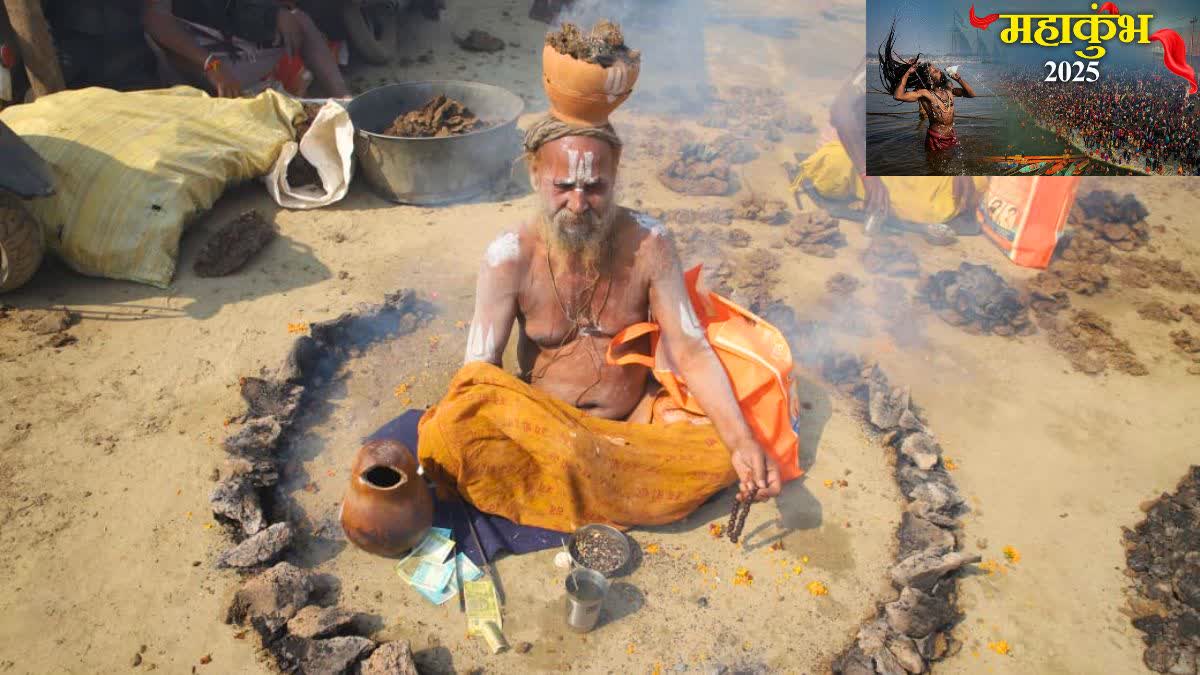Maha Kumbh is not only a festival of faith and bathing. Rather, it is also a confluence of sacrifice, penance and meditation. Here, different types of difficult meditations are performed by different akhadas and sadhus. One such unique meditation is Panch Dhuni Tapasya, which is also called Agni Snan Sadhna.
This difficult meditation started with the ‘Amrit Snan’ festival of Basant Panchami. Maha Kumbh area is a place of penance and meditation, where in every corner some sadhak is seen engrossed in his meditation. In the same sequence, Panch Dhuni Tapasya started from Basant Panchami in Tapasvi Nagar, which devotees are very excited to see.
Sadhana is like a test of fire
In this meditation, the sadhaks make several circles of burning fire around themselves and sit in the middle and do penance. A human’s skin can get scorched by the light flame of ordinary fire, but these ascetics sit in the midst of intense heat and do meditation. This tough sadhana is like the test of fire, in which the sadhaks meditate and chant mantras while keeping control over their body and mind.
Tapasya is more difficult than the initiation of Naga ascetics
Agni Snan Sadhana is mainly popular in Vaishnav Akhadas. In this, sadhus of Digambar Ani Akhada and saints of All India Panch Terah Bhai Tyagi Khalsa participate. According to Mahant Mangal Das of Shri Digambar Ani Akhada, this sadhana is the first process of becoming a recluse. It is also considered as a test of the disciple by the Guru.
How is Panch Dhuni Tapasya done?
At the beginning of Panch Dhuni Tapasya, the sadhak lights a fire with cow dung cakes around him and takes fire from the main fire pit and makes small fire balls around himself. During the sadhana, the sadhus press the fire kept in each fire ball in tongs and rotate it over themselves and then put it back in the fire ball.
During this process, the sadhak puts a cloth on his feet and chants the Guru mantra. This difficult sadhana has to be performed by the sadhu for 18 consecutive years for five months every year (from Basant Panchami to Ganga Dussehra). During this time, the sadhak is required to have complete control over his mind and body.
Purpose and importance of sadhana
The main purpose of this sadhana is to test self-control, tolerance and devotion towards the Guru. Through rigorous penance, the sadhak awakens his spiritual power and strengthens his path of renunciation (sanyas).
This sadhana is not only a test of the sadhu’s patience and self-control, but it also shows that the human body and mind can remain strong even in difficult circumstances like fire. Such difficult sadhanas during Maha Kumbh show how important dedication and rigorous penance are for spiritual advancement.






